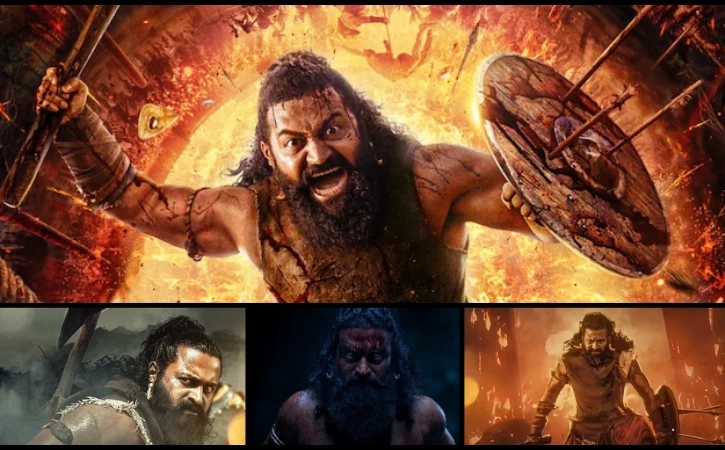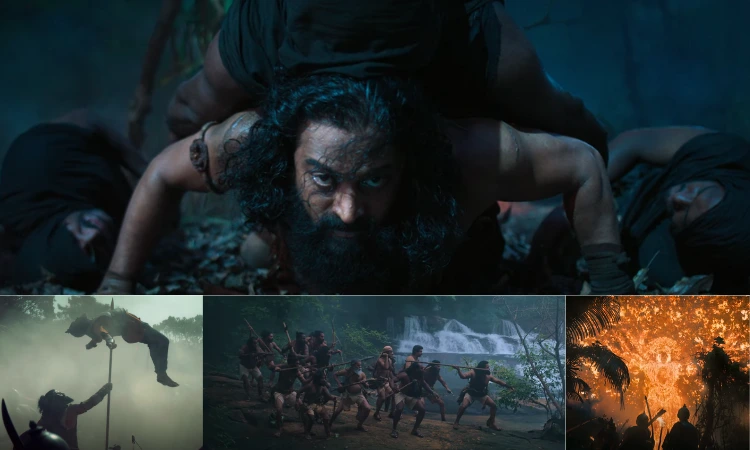When a filmmaker like Rishab Shetty returns with a highly anticipated prequel, expectations naturally soar. Kantara Chapter 1 takes viewers on a thrilling journey into a world filled with rich mythology, deep-rooted folklore, and gripping drama.
But the big question fans are asking is—did Rishab Shetty take bold new steps to push Kannada cinema forward, or did he play it safe by sticking close to his previous blockbuster’s formula? This review peels back the layers of the story, visuals, and cultural themes to find out if this film truly lives up to the high expectations set before its release.
Recap of Kantara (2022): The Phenomenon Begins
The original Kantara film released in 2022 became an instant phenomenon, hailed for its raw portrayal of the clash between indigenous beliefs and modern governance in a remote forested region of Karnataka. It brought alive legendary folklore and mythology with a visceral authenticity rarely seen in Indian cinema.
At its heart was the story of a local man who rises to become a protector of his people, navigating spiritual possession, cultural conflicts, and the power of nature. The film’s haunting visuals, memorable music, and Rishab Shetty’s national award-winning performance set a new benchmark for regional films, making it both critically acclaimed and a blockbuster hit.
Rishab Shetty’s Bold Vision and Execution
Returning as both director and lead actor in Kantara Chapter 1, Shetty expands the folklore universe originally created with grandeur and ambition. The prequel explores the origins of the mythical land ‘Kantara’ and the historic tensions between the tribal communities and the Bangra kingdom. Jaw-dropping visuals and powerful VFX work, especially during the divine trance and battle sequences, elevate the film into a feast for the senses.
Technical brilliance combined with a rich soundscape immerses viewers deeper into this mysterious world. However, this ambition sometimes trips over itself. The story introduces multiple plot threads that at times feel overwhelming or rushed, which can confuse viewers not already familiar with the original. While fans of Kantara will appreciate the layered narrative and cultural depth, newcomers might find it complex.
Fresh Faces and Powerful Characters
Kantara Chapter 1 features a mix of returning talent and new cast members that add fresh energy to the saga. Rishab Shetty’s portrayal of Berme, the tribal leader, remains central, showcasing a powerful transformation from the man we met in the first film to a folklore hero. Newcomer Rukmini Vasanth shines as Kanakavathi, a strong and compassionate figure caught between royal politics and tribal loyalties.
Gulshan Devaiah’s Kulasekhara brings intensity to the role of the brash new king of Bangra, whose irresponsible rule triggers conflict. Veteran actor Jayaram appears as the benevolent ruler before Kulasekhara’s reign, adding gravitas to the political landscape depicted. Each character adds new layers to the intricate dynamics of power, faith, and rebellion, making the prequel not just an origin story but a compelling drama on its own.
The chemistry among the cast and their nuanced performances give life to the folklore and heighten the emotional stakes.
Breaking New Ground or Playing Safe?
While Shetty’s direction reaffirms his mastery in weaving culture and mythology, the film leans heavily on familiar tropes such as divine intervention and tribal mysticism. This cautious adherence to themes fans expect contrasts with his desire to innovate, creating a push-pull dynamic throughout the film.
The strong performances, especially Shetty’s own as the protagonist, add emotional weight and depth that feels fresh. Yet, some secondary arcs, such as the romance subplot, do not receive the same narrative attention, reflecting a missed opportunity to deepen the story further.
Link to Critics Debate and Industry Context
This leads directly into why critics are divided over Kantara Chapter 1—some hail it as a masterpiece of regional cinema, while others believe it plays too safe and fails to fully capture the original’s mysterious magic. Explore this fascinating critical divide next as we uncover the nuances behind the mixed response.


